A Portable Layout in S-Scale
| Home |
Empire Builder
Made from Rescued Marx and American Flyer
3/16 inch to the foot Trains
These pictures and descriptions show a rescue of a few broken and very rusty Marx and American Flyer trains. All of the models are nominally 3/16 inch scale. However, these are toy trains and not really scale models. They also all were made to run on O-Gauge track. Some were made in the 1930ís and some later on. I say rescue, because it is certainly not a restoration nor a refurbishment. The new pilot is unlike any made by Marx. The paint scheme was never applied to these trains by either of the factories.
The locomotive is a Marx 400. It has a plastic shell and an 0-4-0 wheel configuration. When I bought the thing, the pilot (cow-catcher for my younger friends) had been broken off. There was also a severe break in the walkway on the left side of the engine and near the front. The mechanism required the usual cleaning and lubrication. Once that was done, it began to run just fine.
The tender is also Marx. It was in fairly good shape with just a little light rust on the wheels. The lithography was in pretty good shape. Since that is the primary means of applying details to some of these older, tin-plated steel trains, I wanted to preserve it. Like so many other trains from this manufacturer, the tender was marked for the New York Central.
The four cars all came in a rust-bucket lot. The cars were covered with rust including some holes all the way through. A few places turned into holes when the rust was cleaned off. The frames were so bad, in some cases, that it was necessary to solder new metal to support the old and to replace the missing areas. Other repair techniques were employed where the rust damage was too severe to support soldering. Two of the cars had been red American Flyer cars bearing the number 1123. A third car was originally an American Flyer 1122 baggage car to match the two coaches. This car was in the worst condition. The window one side was rusted so badly that it had lost the original, vertical dividers. New ones were fabricated and attached with epoxy. The fourth car was originally a Marx car of some sort. It was rusted so badly that the lithography was all gone and the car was not identifiable. Curiously, the rust was mostly surface rust and the metal underneath was sound.
The finished engine and tender. This is a composite picture made by pasting a couple of photos together. You can see the new, Glacier colors on the engine and an ad hoc application of green to the tender. The idea was to preserve the lithography while changing the road name and tying the colors together. The decals are Microscale.

This view shows the new pilot under construction. You can also see the break in the walkway. The white plastic is Evergreen brand attached with Faller "expert" plastic cement. This liquid comes in a squeeze bottle with a long tube. The tube gets clogged from time to time. I clean it out with a #79 drill bit. The plastic strips sticking out are trimmed and sanded after the glue dries.
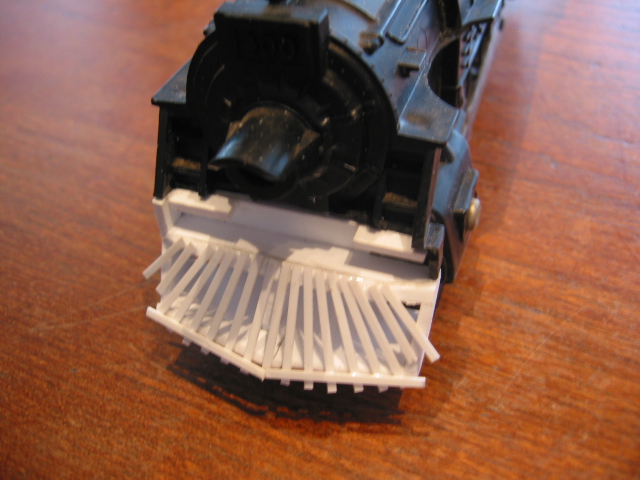
Here is a side-view of the same stage of reconstruction.
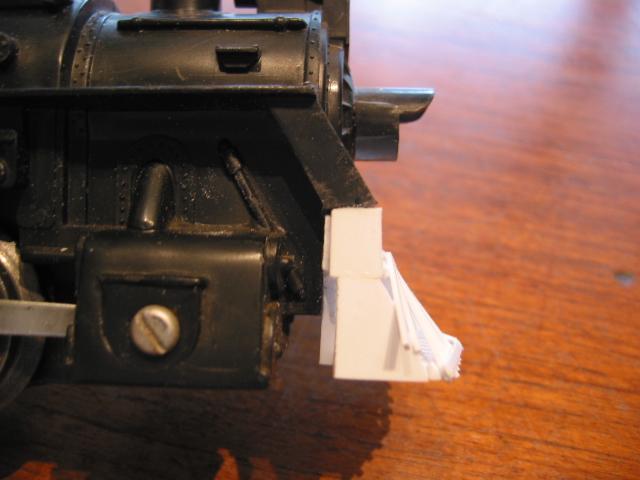
This is the finished pilot.
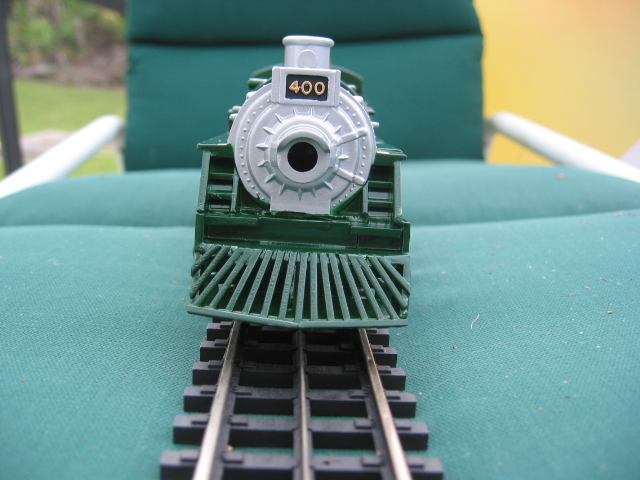
| Home |
This is the finished engine and tender from a three-quarter perspective.
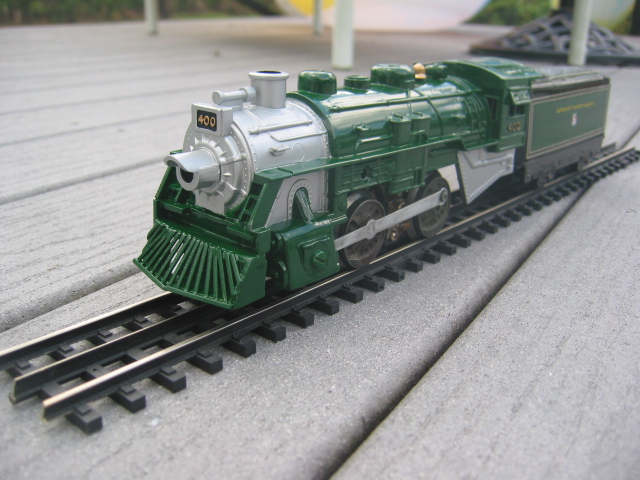
Here is another view of the finished engine and tender. It is easy to see the repaired walkway from this angle.
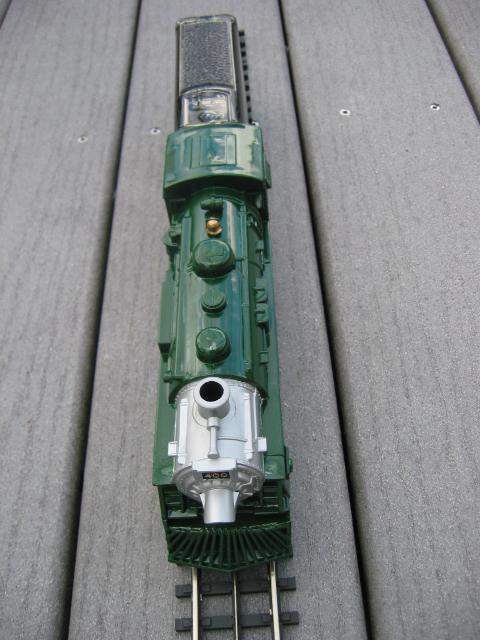
Take a look at the complete train: Engine, Tender, Express, Baggage and Mail, Coach and Coach.

Additional revenue is provided by Express Package Service provided by the Railway Express Agency.
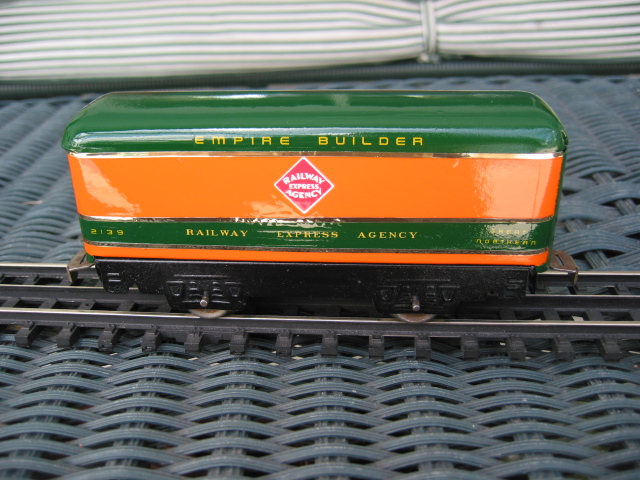
Passenger checked baggage and the US Mail are carried in the baggage car.
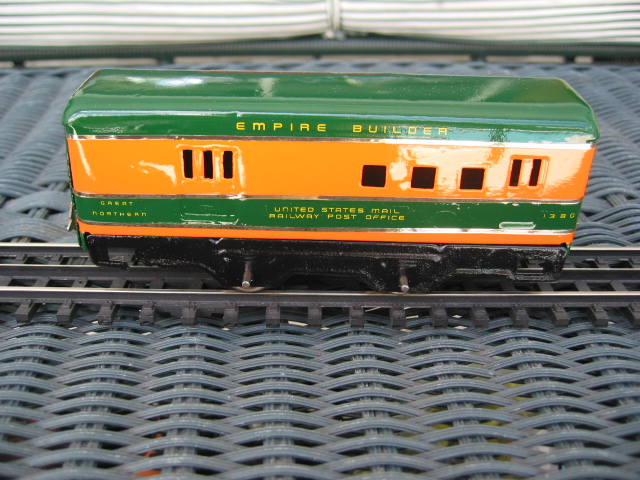
The first of two coaches appears in this photo.
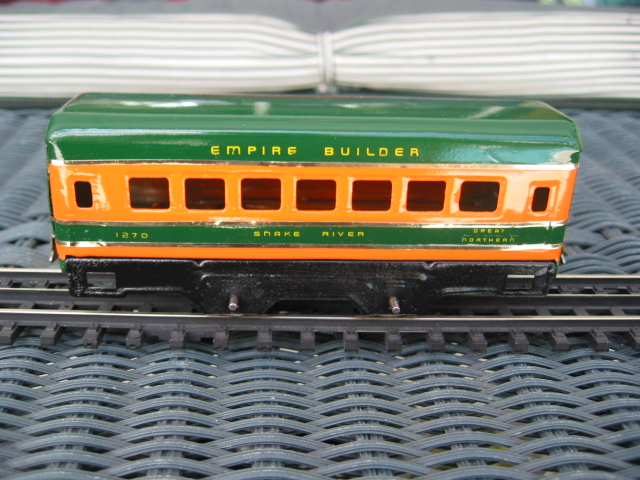
Bringing up the rear is the second coach. Now, we need some Pullman service, a dining car, some sort of dome might be nice and an observation to carry the drumhead. I'll have to keep my eye out for a couple more cars in need of rescue.
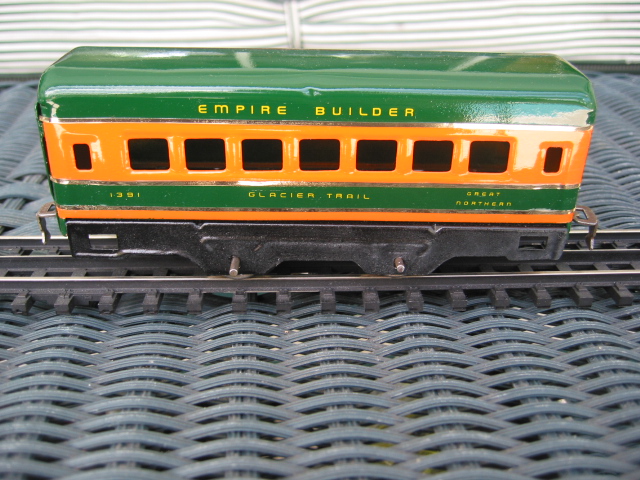
| Home |
| Site and Pages Copyright 2011-2025 - William P. Porter --- Some content belongs to the indicated provider. |